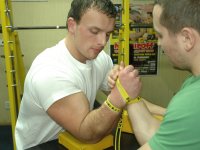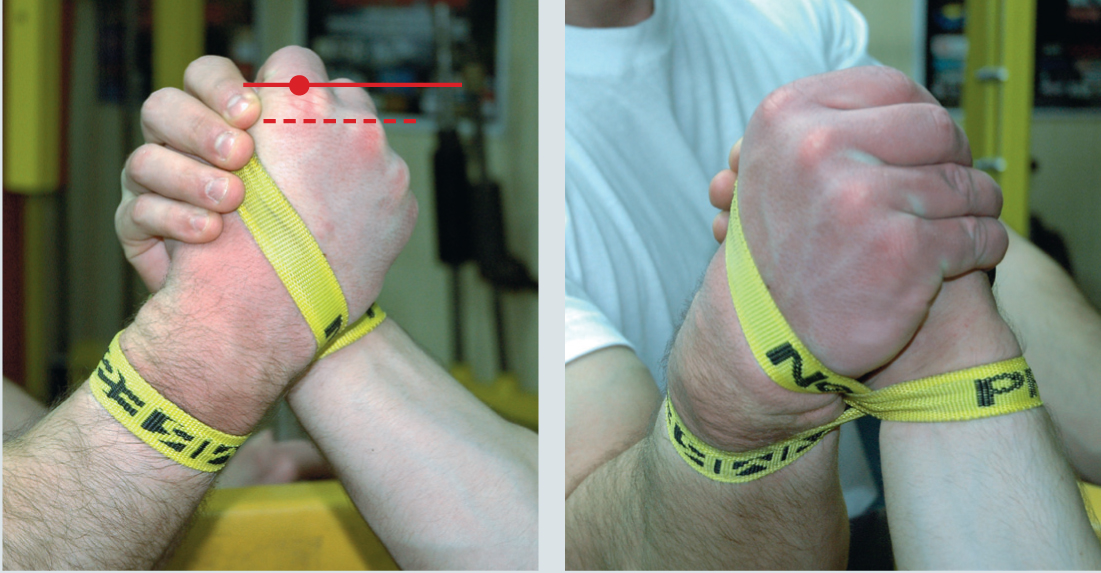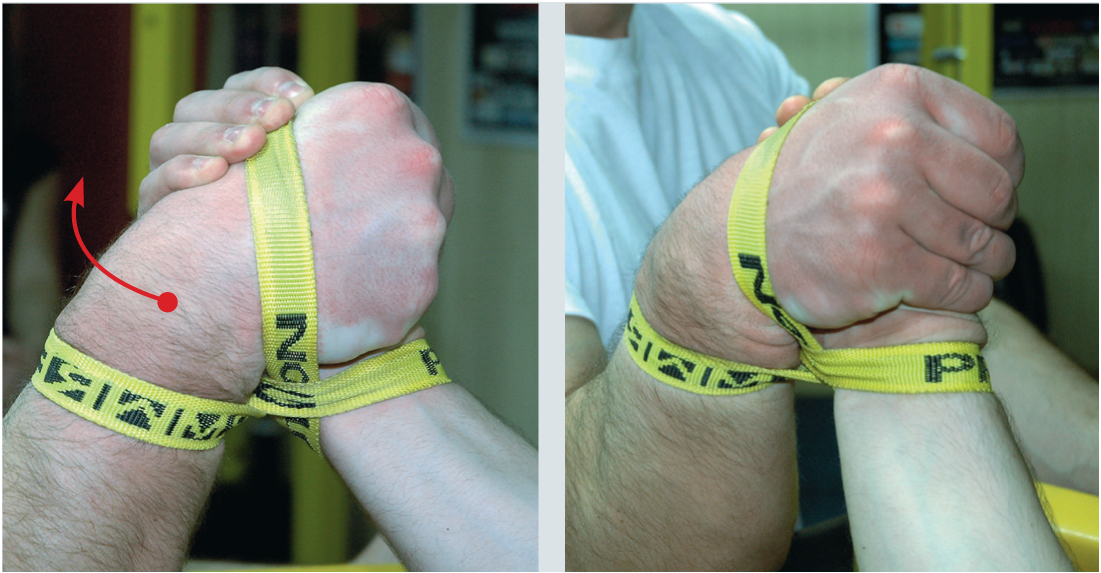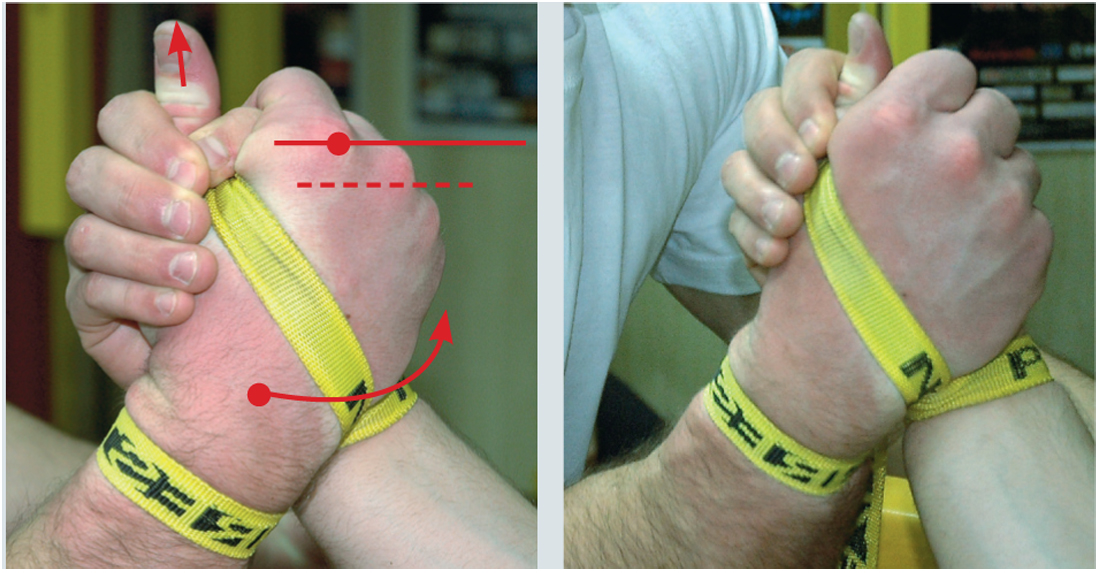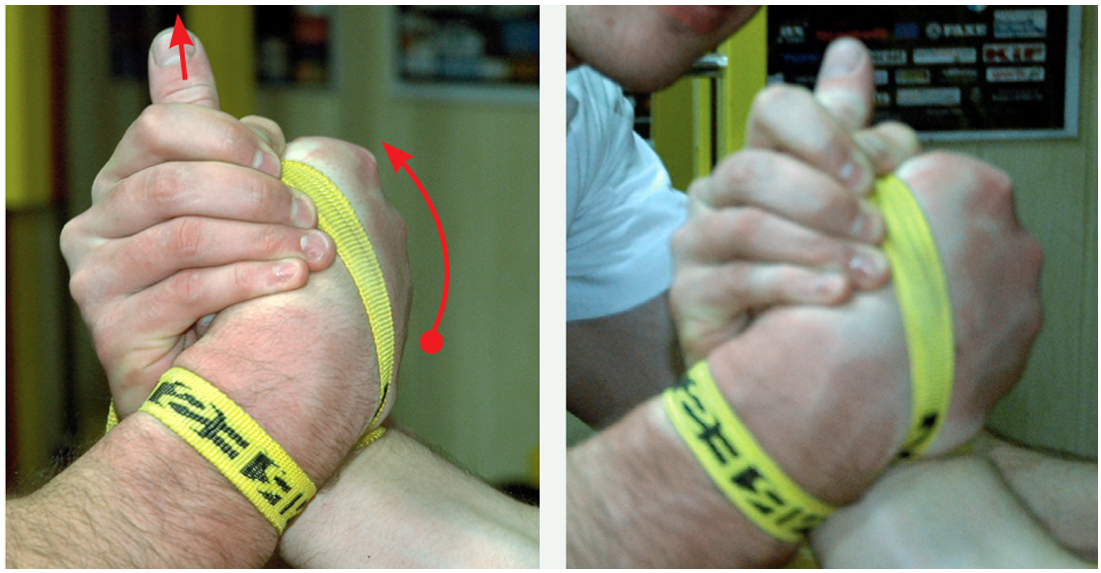During any type of tournament it can be observed that some guys will break the grip only to be able to fight in straps. This is a common technique all over the world.
It would seems fighting in straps is very easy, but it’s not.
There are many deciding factors to fighting in straps, physical, genetic, and all have to be worked on separately and individually, by sparring only.
Depending on your arm and wrist strength, there are many ways of using straps. I myself have encountered many ways and each of them works to some extent. Let’s see how Lubomir Jagneak, many times European and World Champion, fights in straps.
Lubomir usually uses hook, he has a very strong wrist, bicep and side pressure. Fighters like that tend to attack first and not break up. But when the break-up happens, Lubomir has his tricks to get a good start and use all his tricks.
Below we can see different strap settings. Lubomir’s opinion is that only example 1 shows the proper way to tie a strap. Let’s explain why.
Notice the main points:
Point 1 – point of palm flexion.
Point 2 – upper palm edge tied with strap.
Point 3 – bottom palm edge tied with strap.
Point 4 – middle palm section tied with strap.
Point A – point of your index finger
Point B – point of opponent’s index finger
Point C – wrist bone (processus styloideus lateralis)
TYING THE STRAP
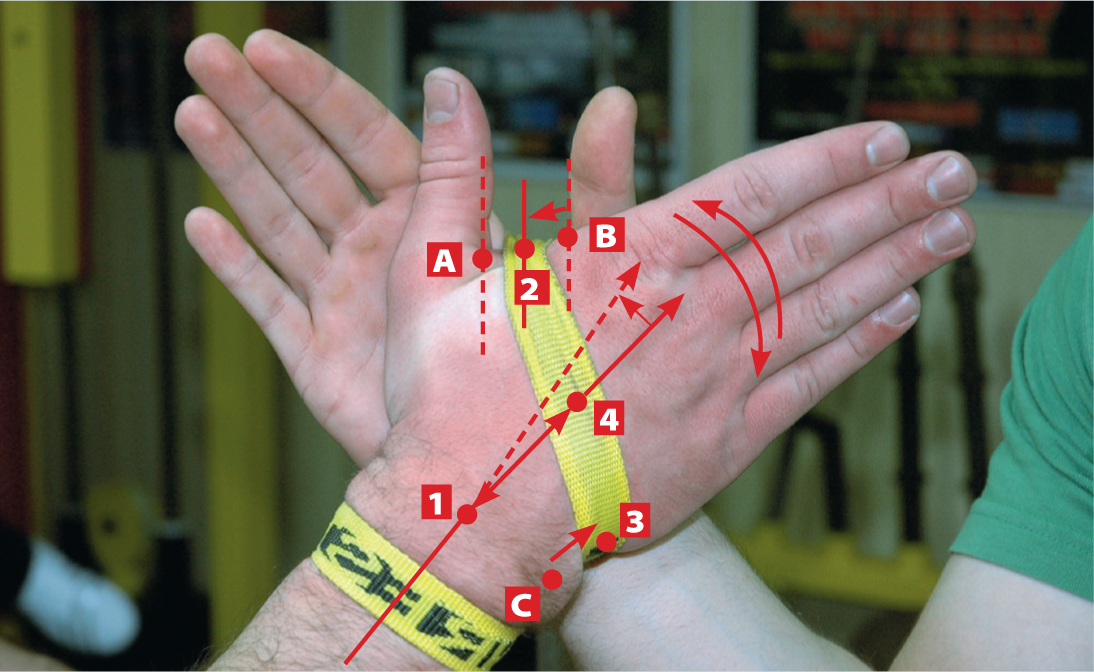 |
Example 1 Proper palm setting before tying is the key to free manipulation after tying. Your palm will be in better setting if, after tying and before closing the fingers, POINT A to POINT 2 is shorter than POINT B to POINT 2, and POINT C to POINT 3 is the shortest. This gives you better wrist maneuverability, both up and down. This also gives a better leverage, |
 |
Example 2 In this case POINT A to POINT 2 is longer than POINT B to POINT 2, and POINT C to POINT 3 is far removed from wrist bone. This limits maneuverability to downwards only. While being strapped it’s very important to set your palm as high as possible. |
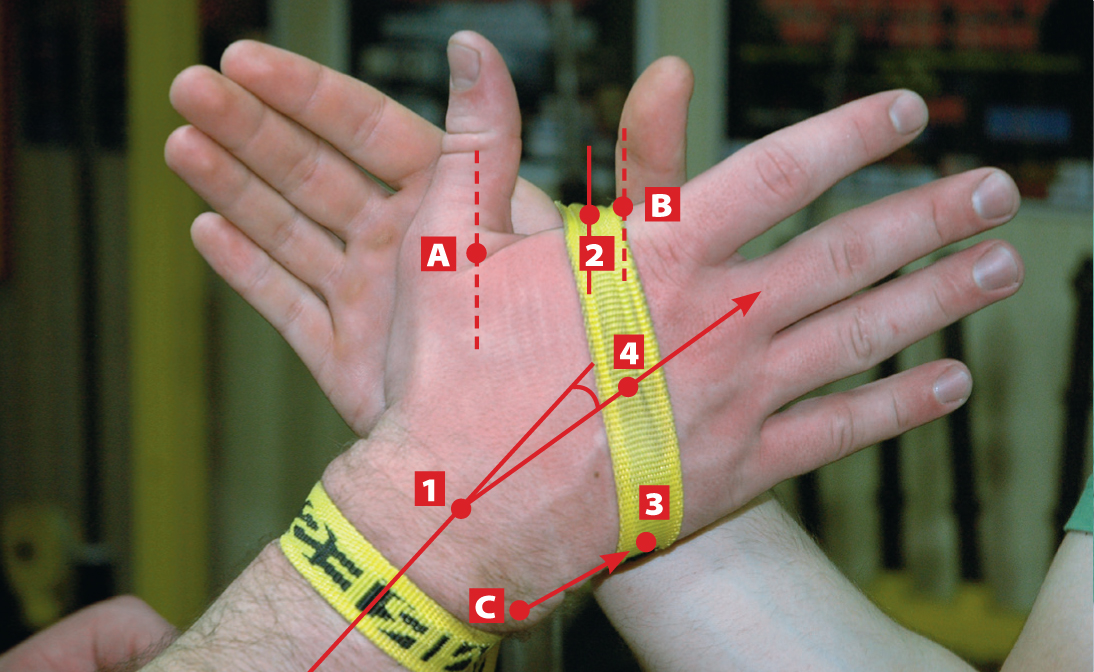 |
Example 3 In this case, POINT A to POINT 2 is longer than POINT B to POINT 2, and POINT C to POINT 3 is even farther removed from wrist bone than in example 2. In this case the wrist is almost immobilized. |
PROFITS FROM PROPER STRAP SETTING
WITH OVER THE TOP
|
Before Ready Go!
After Ready Go!
|
With proper strap setting and palm setting (as high as possible) and after the closing of fingers, opponent’s palm is below the knuckle of index finger (before Ready, GO!). After Ready, GO! You might then attack over the top with the greatest amplitude – wide wrist maneuverability. |
WITH HOOK
|
Before Ready Go!
After Ready Go!
|
As in the photos above, so in this case, with proper strap setting and palm setting (as high as possible) and after the closing of fingers, opponent’s palm is below the knuckle of index finger (before Ready, GO!). Notice that your thumb is open here. Why? The open thumb adds to pushing the opponent’s index finger. In this case (with thumb open), after Ready, GO!, we can easily attack with hook by turning our wrist inwards. |
As you can see, proper strap setting is very important. Details are learned by trial and error, so train and fight as much as you can.

